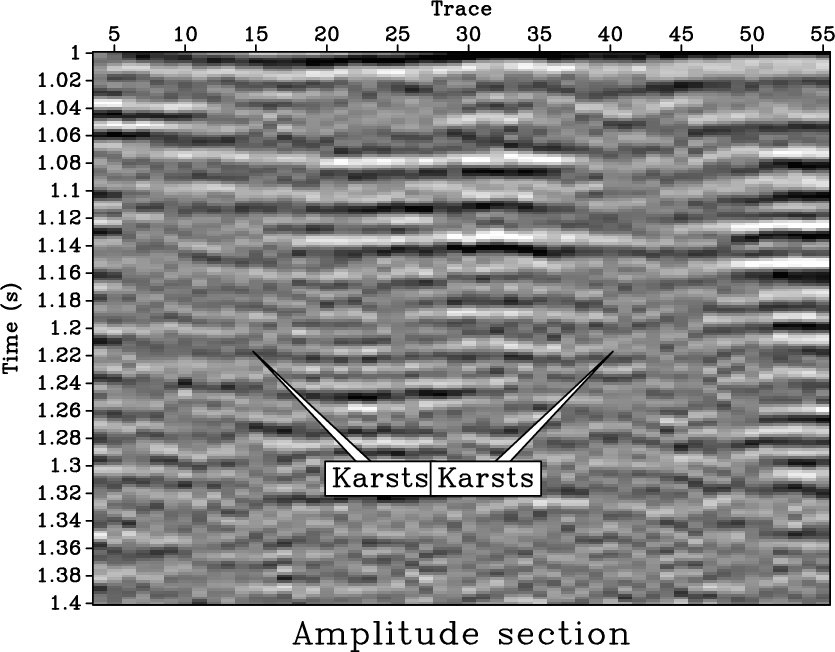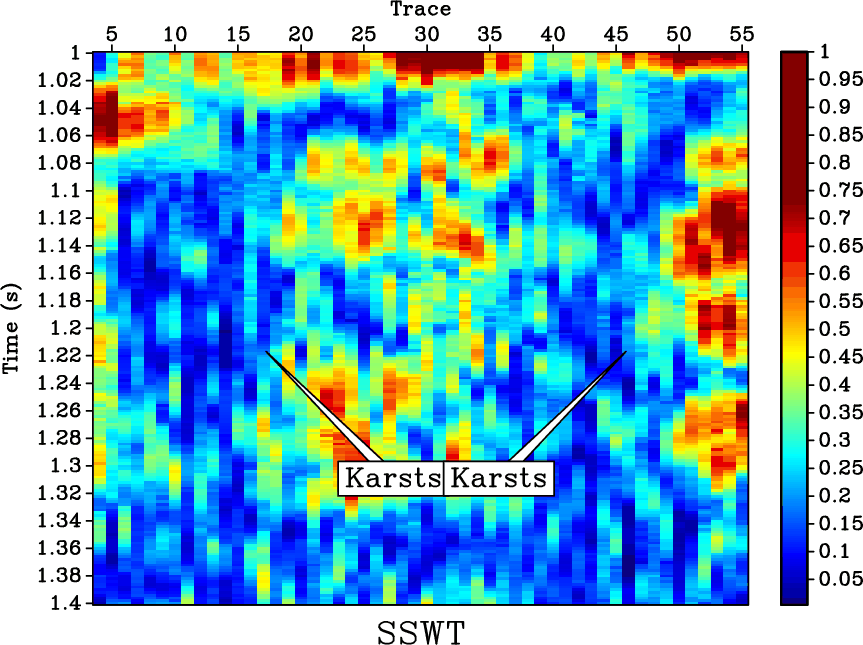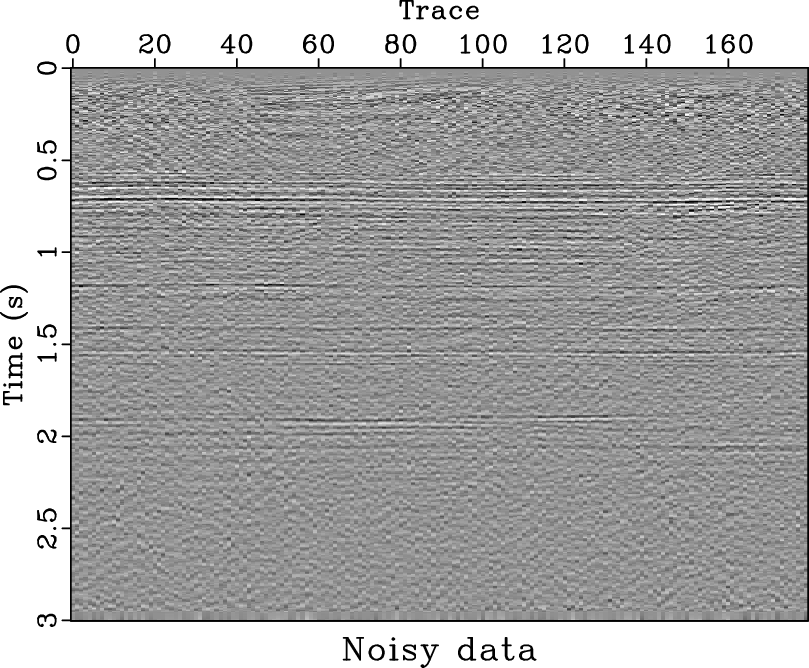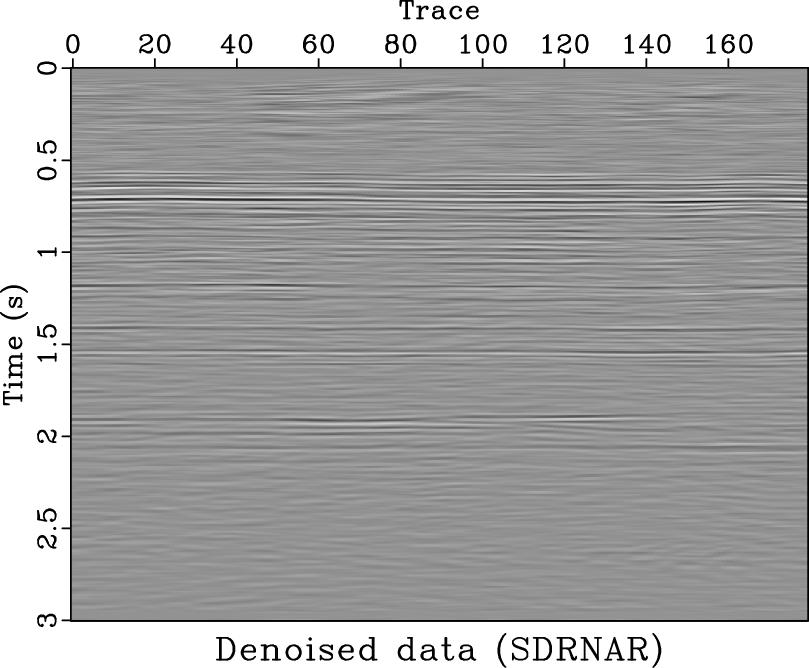A new paper is added to the collection of reproducible documents: Fast dictionary learning for noise attenuation of multidimensional seismic data
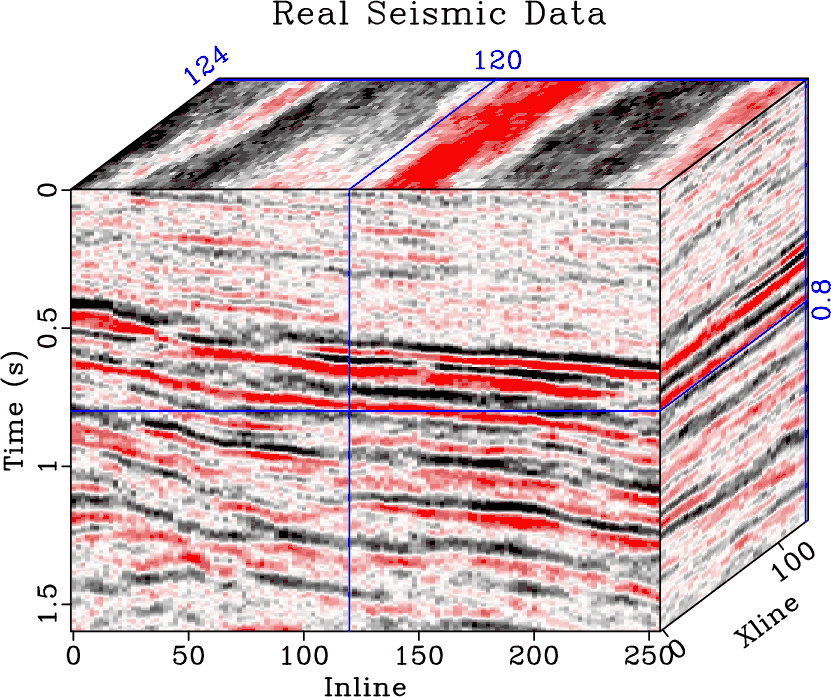
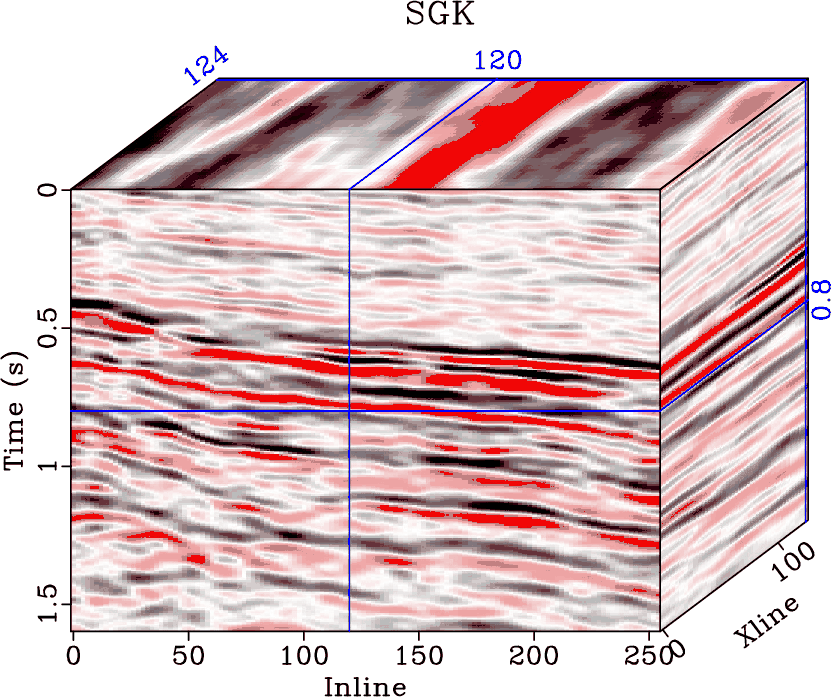
The K-SVD algorithm has been successfully utilized for adaptively learning the sparse dictionary in 2D seismic denoising. Because of the high computational cost of many SVDs in the K-SVD algorithm, it is not applicable in practical situations, especially in 3D or 5D problems. In this paper, I extend the dictionary learning based denoising approach from 2D to 3D. To address the computational efficiency problem in K-SVD, I propose a fast dictionary learning approach based on the sequential generalized K-means (SGK) algorithm for denoising multidimensional seismic data. The SGK algorithm updates each dictionary atom by taking an arithmetic average of several training signals instead of calculating a SVD as used in K-SVD algorithm. I summarize the sparse dictionary learning algorithm using K-SVD, and introduce SGK algorithm together with its detailed mathematical implications. 3D synthetic, 2D and 3D field data examples are used to demonstrate the performance of both K-SVD and SGK algorithms. It has been shown that SGK algorithm can significantly increase the computational efficiency while only slightly degrading the denoising performance.


